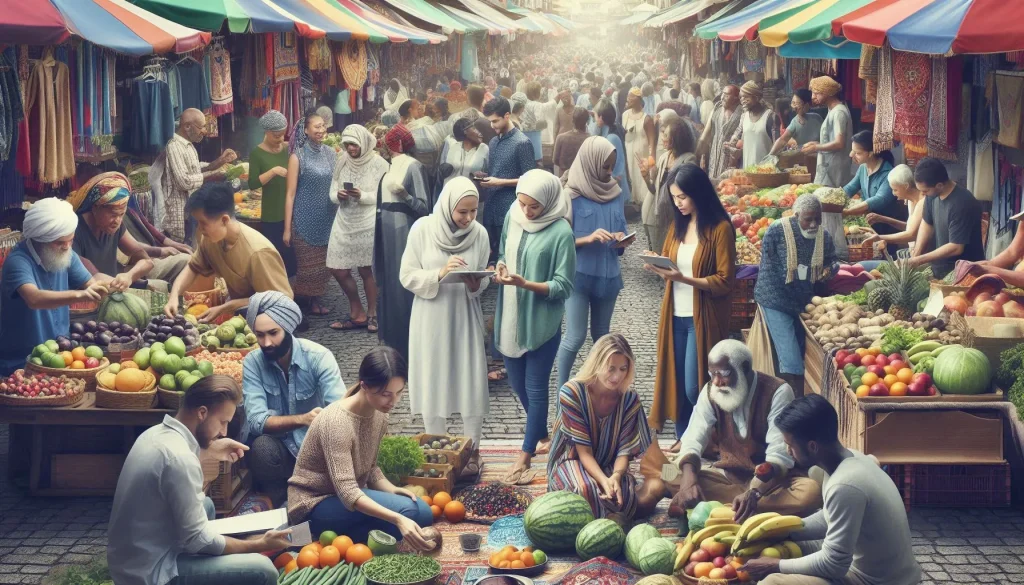Internal Trade – Complete Guide For Class 11 Business Studies Chapter 10
Our learning resources for Class 11th Business Studies Chapter 10 – Internal Trade are designed to ensure you grasp this concept clearly and perfectly. Whether you’re studying for an upcoming exam or strengthening your concepts, our engaging animated videos, practice questions, and notes offer you the best of integrated learning with interesting explanations and examples.
Delve into the intricacies of wholesale trading, retailing, and chambers of commerce with our comprehensive content that breaks down each topic into easily understandable segments, making learning both effective and enjoyable. Let’s start by understanding what exactly is Trade.
Trade is a cornerstone of modern economies, bridging gaps between producers and consumers. As new products and services emerge, the landscape of internal trade continually evolves. In this chapter, we’ll explore the nuances of internal trade, its types, and how Chambers of Commerce contribute to its growth. Let’s dive into the essentials of internal trade and understand its significance in our economy.
What is Internal Trade?

Trade, in its essence, is about the buying and selling of goods and services. This activity has become more crucial in today’s interconnected world as products are developed and consumed globally. But what exactly is internal trade? Let’s break it down.
Internal Trade refers to the buying and selling of goods and services within a single nation. For instance, when a factory produces bathing soap in one part of the country and distributes it nationwide, this is a prime example of internal trade.
Now that we have a basic understanding of what internal trade is, let’s delve into the different types that make up this vital economic activity.
Types of Internal Trade

When it comes to internal trade, it can be broadly categorized into two main types: wholesale and retail. Each type plays a distinct role in the economy. Let’s explore these two categories in detail.
Wholesale Trade
Wholesale trade involves the purchase and sale of goods in large quantities. It’s a key link between producers and retailers.
Features of Wholesale Trade:
Feature Description Bulk Purchasing Buys in bulk from producers and resells to retailers Product Specialization Usually deals in a few types of products Link Between Producer and Retailer Acts as a crucial intermediary in the supply chain
Services of Wholesalers
To Manufacturers:
Service Description Risk Bearing Bears’ risks such as price fluctuations and spoilage Financial Assistance Provides cash payments and advances for bulk orders Expert Advice Offers insights into market trends and competitor information Marketing Support Helps in selling and promoting goods across a wide area
To Retailers:
Service Description Availability of Goods Ensures retailers have access to a variety of products Credit Facilities Supplies goods on credit, allowing payment post-sale Specialized Knowledge Provides information on new products and sales strategies
So, that’s the scoop on wholesale trade and its impact. Next, let’s turn our attention to retail trade and see how it complements the wholesale sector.
Retail Trade
Retail trade involves selling goods directly to the end consumers. It’s where products finally reach those who use them. Let’s explore how retail trade functions and its features.
Features of Retail Trade:
| Feature | Description |
| Direct Consumer Sales | Sells directly to consumers |
| Variety of Products | Deals with a wide range of products |
| Small Quantities | Buys and sells in small quantities |
| Location | Often located in residential areas |
Services of Retailers:
To Manufacturers and Wholesalers:
Service Description Distribution Support Helps in distributing goods to widely scattered consumers Personal Selling Takes on personal selling efforts Market Information Gathers and provides valuable market insights
To Consumers:
Service Description Regular Availability Maintains a steady supply of various products New Product Information Informs about new arrivals and demonstrates new products Convenience Assists in product selection and provides convenience
With a clear understanding of retail trade, let’s look into the different types of retailing and how they cater to various consumer needs.
Types of Retailing Trade
Retail trade can be categorized based on whether retailers have a fixed place of business or operate without one. Let’s dive into the distinctions between itinerant and fixed-shop retailers.
Itinerant Retailers:
Type Description Peddlers and Hawkers Small traders who move from place to place Market Traders Operate in markets on fixed days Street Traders Found in areas with large crowds Cheap Jacks Small independent shops offering various items
Fixed Shop Retailers:
Type Description General Stores Offer a variety of daily needs Specialty Shops Focus on specific product lines Secondhand Goods Shops Deal in used items at lower prices
Let’s now turn our attention to large-scale retail establishments and how they cater to a wide range of consumer needs.
Large Retail Stores:
Type Description Departmental Stores Offer a wide variety of products under one roof Chain Stores Operate multiple branches with centralized management Consumer Cooperative Stores Owned and managed by consumers, aiming to cut out middlemen Vending Machines Sell products like beverages and snacks
Advantages and Limitations of Retail Stores
Large retail stores offer numerous advantages but also come with certain limitations. Here’s a closer look at both.
Advantages of Departmental Stores:
Advantage Description A centralized backdropattracts many customers Centralized location attracts many customers Convenience in Buying Consumers can buy almost all goods under one roof Attractive Services Includes home delivery, credit facilities, and more Economy of Scale Benefits from bulk purchasing
Limitations of Departmental Stores:
Limitation Description Expenditure on Sales Promotion High costs for advertising and promotion High Operating Costs High rent and staff salaries increase costs Risk of Stock Loss Risk of stock becoming obsolete due to changing tastes
With an understanding of the advantages and limitations, let’s explore the specialized types of fixed-shop retailers and their unique characteristics.
Specialized Retail Stores
Various types of specialized retail stores cater to different consumer needs. Here’s a look at some prominent types:
Chain Stores or Multiple Shops:
Chain stores operate multiple branches under a centralized management system. They specialize in particular product lines and provide uniformity across locations.
Advantages of Chain Stores:
Advantage Description Economies of Scale Bulk purchasing reduces costs Elimination of Middlemen Direct sales from manufacturer to consumer No Bad Debts Cash transactions reduce financial risks Goods Transfer Unsold goods can be relocated to other branches
Limitations of Chain Stores:
Limitation Description Limited Choice of Goods Limited to specific brands and products Lack of Initiative Salespersons may lack spontaneity Lack of Personal Touch Often impersonal service
Consumer Cooperative Stores:
Consumer cooperative stores are managed by their members, aiming to reduce middlemen and provide goods at lower prices.
Advantages of Consumer Cooperative Stores:
Advantage Description Limited Liability Members’ liability is restricted Democratic Management Members have a say in management decisions Lower Prices Eliminates middlemen to provide lower prices Consumer Protection Guards against dishonest trading practices
Limitations of Consumer Cooperative Stores:
Limitation Description Limited Funds May struggle with funding due to limited membership Lack of Professional Management Often lacks professional expertise Member Commitment Members may not be able to devote sufficient time
Vending Machines:
Vending machines provide a convenient way to purchase various products without human intervention. They are popular for items like snacks, beverages, and even platform tickets.
The Role of Chambers of Commerce and Industry
Finally, let’s explore the vital role Chambers of Commerce play in promoting internal trade. These organizations work in collaboration with the government and businesses to enhance the trading environment.
Chambers of Commerce:
Role Description Infrastructure Building Collaborates on developing essential business infrastructure Octroi and Local Levies Advises on harmonizing sales tax and VAT Weights and Measures Ensures standards for weights and measures Marketing Agro Products Assists farming cooperatives with marketing strategies
Conclusion
Internal trade is a complex yet essential part of a nation’s economy, facilitating the distribution of goods and services across different regions. By understanding the types and features of internal trade, along with the roles played by wholesalers, retailers, and Chambers of Commerce, we gain a clearer picture of how economic activities are interconnected. This knowledge is crucial for anyone looking to grasp the full scope of internal trade and its impact on the economy.
Practice questions on Chapter 10 - Internal Trade
Get your free Chapter 10 - Internal Trade practice quiz of 20+ questions & detailed solutions
Practice Now








